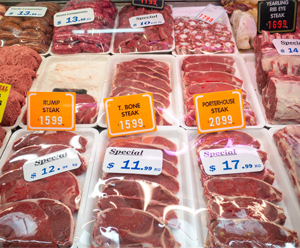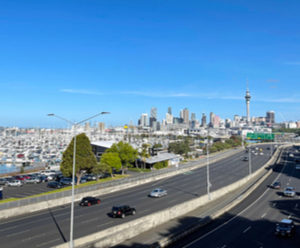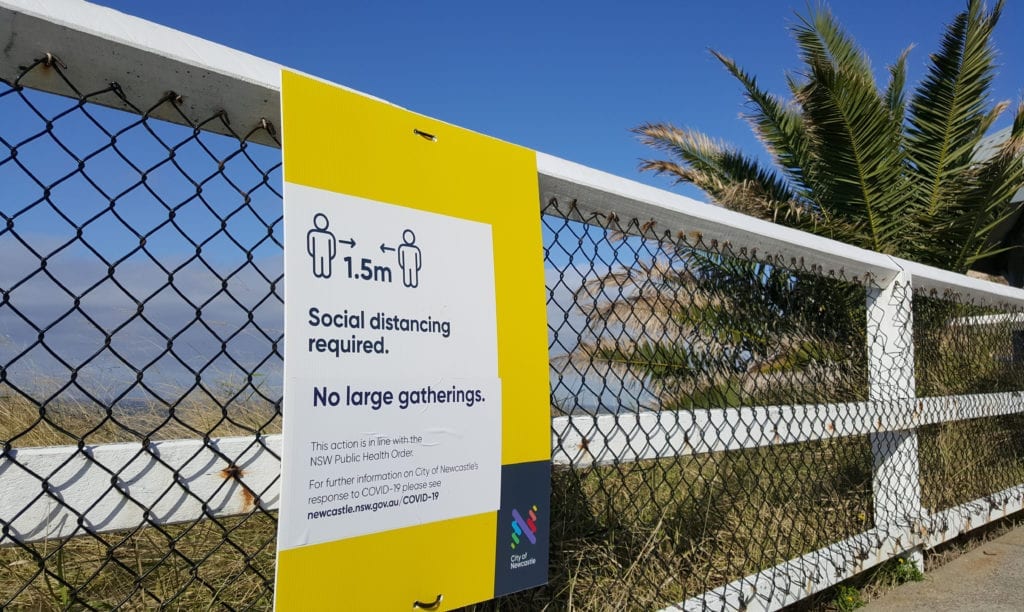
Amid Covid-19, Australia and New Zealand find support in closer trade ties

New Zealand is usually a hot spot for travelers looking to explore its natural attractions from dramatic fjords to pristine beaches. But in 2020, the country saw its lowest tourism arrivals since 2002, with only 90,000 to 120,000 visitors arriving in August.
As Covid-19 struck, travel services spending — New Zealand’s biggest services export in recent years — contracted by half to NZ$1.8 billion (€1.06 billion) in the second quarter of 2020. It drove a 16 percent decline in all exports during the same period.
Across the Tasman Sea, a similar story unfolded in Australia. The country’s goods exports declined by 4 percent month-on-month in May 2020, from A$31.1 billion (€19.2 billion) to A$29.7 billion (€18.3 billion), and dipped by 13 percent year-on-year.
But even as the pandemic has significantly dampened export revenues for New Zealand and Australia, the two countries share a common thread of optimism: exporters are maintaining a positive outlook for the market in 2021, according to two DHL export reports.
“Although the challenges of this year have had a significant impact on overall exporter confidence, Australian export businesses have once again displayed their ability to pivot strategies to maintain, and in some cases even increase export orders and revenue,” said Gary Edstein, CEO and Senior Vice President, DHL Express Oceania.
“This resilience is further reflected in the portion of exporters predicting business revenue to stabilize within the foreseeable future.”
Exporter confidence takes a beating
As countries deeply plugged into the global trade order, Australia and New Zealand were hit badly as Covid-19 wreaked havoc on global supply chains. This caused confidence among exporters to plummet to an all-time low.
According to the DHL Export Barometer 2020, which analyzes Australian exporters’ confidence in the global export market, only 47 percent of Australia's exporters felt that 2021 will bring increased revenue — a 22 percent drop from 2019 and a record low that surpassed even the global financial crisis.
Disruption and delivery delays were issues that more than half of Australian exporters struggled with the most. This was followed by concerns about mounting freight costs, which worried 51 percent of those surveyed.
With air travel reduced to a minimum, air freight availability has also been hit. One industry that has suffered, as a result, is the Australian fishing industry. Hurt by twin setbacks of difficulty in exporting high-value fresh seafood and price falls, businesses saw revenue plunge by 22.5 percent during the year.
Across the board, 57 percent of the Barometer’s respondents also reported a decline in revenue, while about a quarter revealed a significant reduction in earnings in 2020.
Neighboring New Zealand also saw exports decrease, although at a lower impact than expected.
Data from the 2020 ExportNZ DHL Export Barometer, which measures New Zealand export confidence, revealed that about 35 percent of Kiwi businesses saw their export orders drop, compared to 15 percent in 2019. However, 50 percent were confident that their exports would increase in 2021.
Their challenges mirrored those in Australia, with 66 percent citing cost of transport and logistics as the top barrier. Similarly, 86 percent of companies experienced delayed transit times.
Finding mutual support in an uncertain future
However, it is not all doom and gloom. There were positive signs among the exporters even amid the ongoing pandemic. For instance, 22 percent of Australian exporters saw a rise in income in 2020.
Additionally, 57 percent of businesses expect their income to bounce back before the end of 2021. However, this could now take longer with Sydney battling a new coronavirus cluster that emerged days before Christmas.
Kiwi exporters seem even more confident, compared to their Australian counterparts. While only 36 percent of Kiwi exporters saw export orders increase, 66 percent did not feel a negative impact on their export business opportunities because of the pandemic. Half of Kiwi respondents remain hopeful that their exports will increase next year.
“We are not out of the woods just yet, and this year’s ExportNZ DHL Export Barometer results highlight that, but it is great to see that Kiwi exporters remain optimistic for the coming year,” said Selina Deadman, Vice President Commercial, DHL Express New Zealand.
The positive sentiment rides on New Zealand’s economic recovery. Having found success in containing the virus, which took 25 lives among its five million people, the country clocked a record economic growth of 14 percent in the third quarter of 2020, at a time where many other economies around the world were still struggling to return to growth.
For the two countries, the optimism that demand will pick up in their home markets is driven by one important factor — that they can and will continue to count on each other as major export markets.
New Zealand remains the strongest market for Australia, with seven in 10 Australian exporters currently targeting their neighbors. Likewise, Australia dominates Kiwi exports with 82 percent of respondents sending goods across the Tasman.
The reciprocal relationship is set to persevere as the trade ministers of both countries reaffirmed cooperation in July 2020 to navigate out of Covid-19 crisis, while a travel bubble is in the works.
Meanwhile, going digital and raising their online presence proved to be a massive help for exporters incapacitated by closed borders. Australian exporters that reported revenue increases this year were more likely to actively participate in strategies to grow online orders.
“Despite a worldwide disruption resulting from lockdowns and many countries’ diverse responses to the virus, most exporters have managed to adapt quickly to this new normal,” noted Edstein.
“This attests to the transformative possibilities of technology and online communication, which have helped businesses explore previously untapped opportunities to connect with their customers digitally.”
ALSO WORTH READING















 English
English